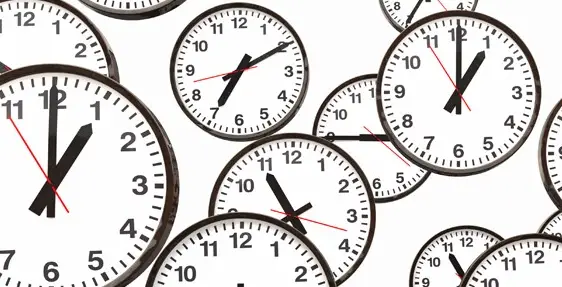The Practical Alternative To Work
Why am I here?
This question haunts many of us. Every day, there are 11 million business meetings in the US, and 50{54c12dad2cc2b53ae830e39915b1a3e70288dbcbbeb8bbf8395437c5dc3c512c} of these meetings are deemed a waste of time. We sit through these sessions and endure them, despite an obvious and glaring lack of purpose, agenda, and set of outcomes. What’s more mid-blowing is that the estimated cost of unproductive meetings is $37 billion US dollars per year. That’s a lot of money just to eat donuts, feel important, use laser pointers, and impress colleagues.
How does this happen?
7 pitfalls occur regularly in your meetings.
1. Expectations
Lack of purpose. Lack of expected outcomes. Lack of agenda.
The most common reason for unproductive meetings is unclear expectations. The purpose of the meeting and type of meeting are very important to clarify in advance. The agenda should reflect the purpose and type of meeting, while structuring a logical and sequential path to reach the expected outcomes.
2. People
Too many people. Wrong people. Unclear role of each person.
Have you ever sit in meetings wondering who people are, why they’re here, and what they actually do? Precious time is spent on introductions! And some people just sit there and contribute nothing because they are unclear of their responsibilities. Key takeaway from this is to spend time crafting the right profile of attendees and to limit invitation to people who are necessary and committed to the meeting’s purpose and expected outcomes.
3. Homework
Lack of tasks. Incomplete tasks. Rushed assignment of tasks.
Do you assign homework for each meeting? Do you embed pre-meeting tasks in the calendar invite? Maybe you use a gigantic Google Doc? But how many of your guests complete their assigned tasks? None, maybe one? Main reason people don’t finish pre-meeting tasks: the tasks seem unimportant when not explicitly linked to the meeting’s purpose, agenda, and expected outcomes. Takeaway: Every meeting facilitator must clarify the context and significance of each pre-meeting task.
4. Time Management
Starting late. Ending late. Late attendees disrupting agenda.
In many cases, people run chronically late because they double-book themselves for meetings or don’t add buffer to estimated travel time. We often run late from previous meetings that ran late. Without a clear definition of what it means for a meeting to conclude, i.e. expected outcomes, we find ourselves in overrun get-togethers, which cause domino-effect problems for meetings later the same day.
5. Facilitator
Excessive content. Straying from agenda. Unwanted Monologues.
It sounds like common sense that facilitators need to keep meetings on track. Digging deeper, we learned that holding the reins and enforcing the agenda is daunting. Many professionals worry that demonstrating assertiveness, or perceived aggressiveness, may jeopardize popularity or rapport. The reality is that people want you, the meeting facilitator, to silence Bob’s monologue and minimize tangential discussions, as cordially as possible.
6. Etiquette
Multitasking. People interrupting each other. Emotional outbursts.
Yes, we’ve all done it. Our phones vibrate with a new message, and we leap to see the preview. It’s a Pavlovian reaction, but everyone does it. Needless to say, meeting etiquette is a big frustration. People interrupt each other without listening, without pause. When a meeting devolves into such chaos, the meeting facilitator must take the helm, enforcing structure.
7. Follow Up
Lack of meeting minutes. Lack of action items. Misinterpretation.
Lack of meeting minutes is a strong signal of unproductive, ineffective meetings. If nobody captures the decisions and action items, then nobody is accountable for the decisions and action items. In short, the meeting will have been a colossal waste of time. High-quality meeting minutes consolidate the moving parts, bringing everyone together on the same page. They also reduce misinterpretation, reinforce alignment, thereby reducing misinterpretation and serving as context for future meetings.
Diagnosis
Unproductive meetings are painful, aggravating, and wasteful. The opportunity cost of every meeting is time, and time is money. Imagine 8+ hours every week that could be spent on revenue-generating or strategic value-add activities. At a macro-level, we see the salary cost of time spent in business meetings is $37 billion US dollars each year. That’s mind-blowing. Preparation, facilitation, and follow-up are crucial to making faster decisions in meetings, ultimately driving faster outcomes and increased revenue. The facilitator must tame the chaos and steer clear of the 7 pitfalls!
———-
Sabrina Atienza is a recent UC Berkeley graduate in Computer Science and Physics. She’s grateful to work with amazing colleagues on Qlockwise, the only meeting planner for faster decisions, faster outcomes, and increased revenue.
Linkedin: https://www.linkedin.com/in/sabr1na
Twitter: @Sabrina_Atienza
Erin shows overscheduled, overwhelmed women how to do less so that they can achieve more. Traditional productivity books—written by men—barely touch the tangle of cultural pressures that women feel when facing down a to-do list. How to Get Sh*t Done will teach you how to zero in on the three areas of your life where you want to excel, and then it will show you how to off-load, outsource, or just stop giving a damn about the rest.





233987 124441I actually treasure your piece of work, Fantastic post. 573203
70261 299268I like the way you conduct your posts. Have a nice Thursday! 69874
I just want to mention I am very new to weblog and certainly loved your web blog. Almost certainly I’m want to bookmark your blog . You certainly come with great articles and reviews. With thanks for sharing your web page. Love Doll Blog
에볼루션코리아
187MHgbyF~^;
에볼루션카지노
936dNwtZE\!#
에볼루션바카라
461IJxgjs$={
에볼루션블랙잭681GElqse[-#